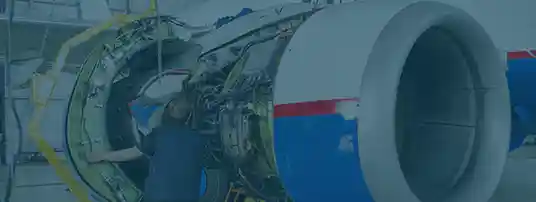Aircraft lighting systems are essential to modern flight, ensuring safety, functionality, and passenger comfort. These systems span both exterior and interior applications, supporting everything from midair visibility to onboard evacuation procedures. In this blog, we will explore essential categories of aircraft lighting systems and how each contributes to safe, efficient, and passenger-centered operations. Read more >>
While connectors may appear to be relatively inconsequential components, those used in military aircraft must meet uncompromising performance standards. These items enable the stable transmission of power, data, and signals between critical systems, making a significant impact on an aircraft’s performance and safety. With this said, it is essential for anyone involved in military and defense operations to know how to choose the appropriate Military Specification (MIL-SPEC) connectors. In this blog, we will cover everything you need to know about MIL-SPEC connectors, from the standards governing their design to which popular types are best suited for military aviation. Read more >>
In recent decades, the aviation industry has witnessed a significant shift toward digitalization, especially in cockpit design and avionic integration. Glass cockpits, which are named for their use of digital displays instead of analog gauges, have now become a standard in most modern commercial and business aircraft with their ability to compile complex instrumentation into a more streamlined and integrated format, enhancing system functionality and situational awareness for flight crews alike. Among the various innovations contributing to this transformation, Electronic Flight Instrument Systems (EFIS) are particularly notable for their role in supporting pilots with clear, real-time flight data that is essential for safe and effective navigation. Read more >>
It is safe to say that each and every component of an aircraft plays a crucial role in overall flight operations. Thus, ensuring the quality and reliability of these parts is not just a matter of preference; it is a regulatory necessity. This is where Parts Manufacturer Approval (PMA) comes into play as a critical process in the aerospace industry for the availability of components, and in this blog, we will discuss exactly why that is. Read more >>
In the vast realm of aviation, the efficiency and performance of an aircraft regularly hinge upon the intricate design and composition of its wings. These marvels of modern engineering are not merely elements for generating lift, but dynamic structures that contribute significantly to the aircraft's aerodynamics, stability, and overall functionality. In this blog, we will discuss the various components that commonly make up aircraft wing structures, unraveling the design choices that permit heavier-than-air flight for countless models. Read more >>
It is easy to forget the intricate systems and components that make modern aviation possible. Avionic components, often referred to as the "brains" of an aircraft, play a critical role in ensuring the safety and functionality of every flight. In this blog, we will delve into avionic components, discussing common parts such as the Global Positioning System (GPS), weather system, multifunction displays, and more. Read more >>
Two classification systems serve as the primary methods for organizing information and guiding aviation professionals: the Illustrated Parts Catalog (IPC) and Air Transport Association (ATA) Chapters. Although they are both reference structures for aviation parts and systems, their applications, format, and s...
Across an entire aircraft and the runways it uses, there are too many lights to count, ranging from taxi lights to runway turnoff lights, and more. For a general understanding of what they are used for, the lights on aircraft can be broken down into categories by their colors, functions, and purposes. Throughout a single flight at night, all lights may be used at least once, but at varying stages of flight. For example, taxi lights and runway turnoff lights are typically used when the airplane is on the ground, while anti-collision lights and navigation lights are a must during the whole flight. To help you better distinguish between the different types of lights used by aircraft, this blog will further explore the common groups of lights and their...
With the complexity and extent of aircraft systems, accurately monitoring and responding quickly to developing issues is vital to both flight safety and operational efficiency. The Engine Indicating and Crew Alerting System (EICAS) is a centralized, electronic display interface designed for this purpose, delivering real-time data from multiple onboard systems. This blog will explore the essential functions of an EICAS, detailing how it consolidates system parameters, provides alerts, and assists with diagnostics. Read more >>
With the constant demands placed upon general aviation aircraft, it is critical to have a robust ground operations network. With multiple actions needing to be accomplished between flights, owners often look for entities capable of efficiently providing a wide range of services. With the current air transportation model, owners of both private and commercial aircraft have numerous options for ground service operators, but most choose to depend upon a fixed-base operator (FBOs). To provide a better understanding of the role that FBOs play, we will discuss some of the services they offer, as well as the equipment that supports them. Read more >>

 The only independent
The only independent



“We Proudly Support Intrepid Fallen Heroes Fund that serves United States Military Personal experiencing the Invisible Wounds of War : Traumatic Brain Injury (TBI) and Post Traumatic Stress (PTS). Please visit website (www.fallenheroesfund.org) and help in their valiant effort”.
We Hope that You Will Visit Us Again the Next Time You Need Aircraft Parts and Make Us Your Strategic Purchasing Partner.
Request for Quote